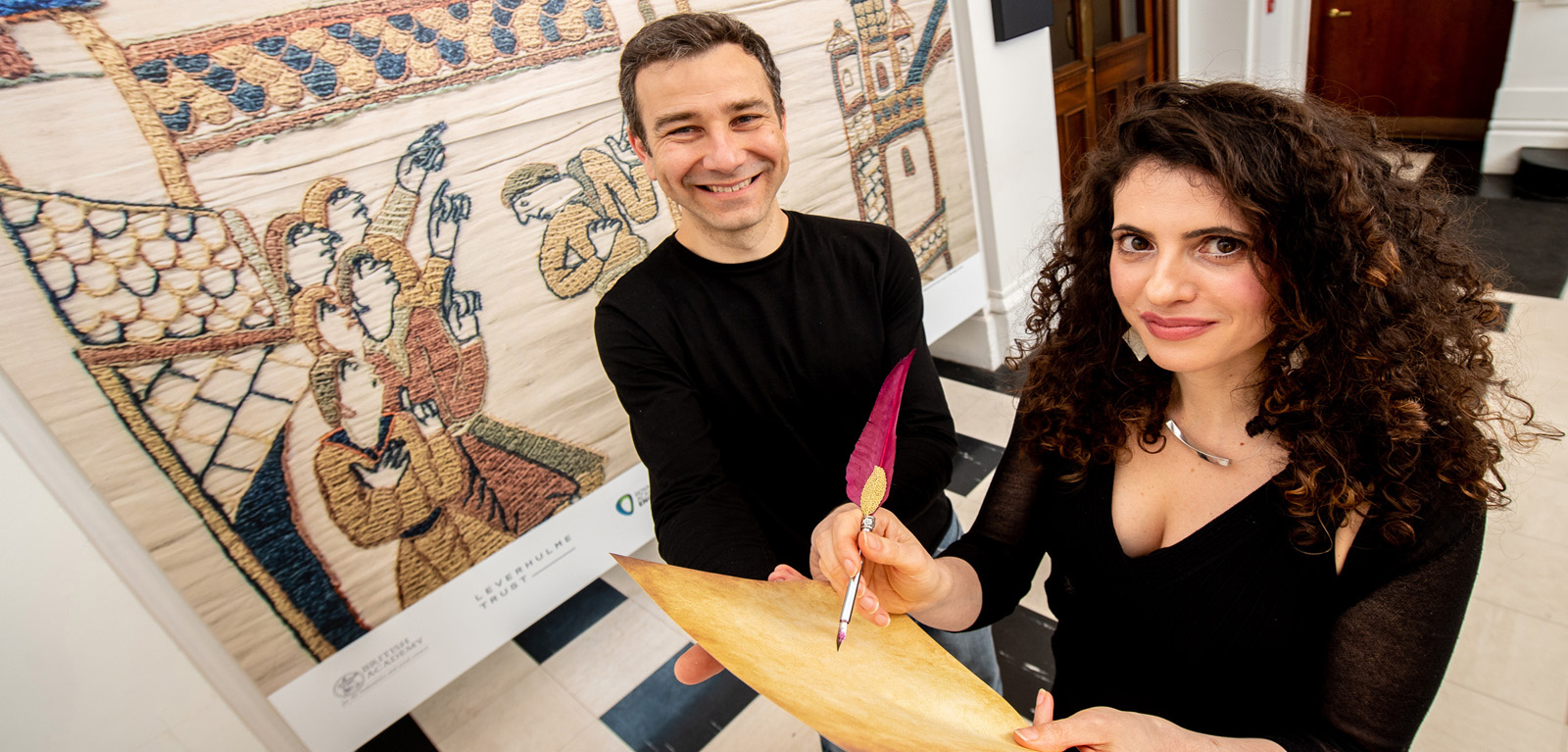Queen’s researchers launch exhibition exploring the Anglo-Saxons knowledge of the skies
Researchers from Queen’s have launched a new, interactive exhibition exploring the Anglo-Saxons understanding of the cosmos in the Middle Ages, and whether it may provide further clues on the whereabouts of the hypothetical ‘Planet Nine’.

The exhibition, entitled ‘Marvelling at the skies: comets through the eyes of the Anglo-Saxons’ will run at the Ulster Museum in Belfast until Sunday 3 June 2018, and is part of a cross-disciplinary research project ‘Before and after Halley: Medieval Visions of Modern Science’ led by Dr Marilina Cesario, from the School of Arts, English and Languages in collaboration with Dr Pedro Lacerda, from the School of Maths and Physics at Queen’s University.
The research project has also been selected to be presented in London at the first British Academy Summer Festival on 21-23 June 2018 as one of the best funded research projects in the UK, with part of the exhibition being showcased at the festival.
Combining records of comets from Anglo-Saxon sources with contemporary images of comets (from NASA, the New York Times and The Northern Ireland Amateur Astronomy Society (NIAAS), the exhibition takes visitors on a cosmic journey from the earliest contemporary description of a comet in England in the year 891 under the period of Alfred the Great, to the sighting of a hazy green-hued comet Lovejoy in 2013.
Speaking ahead of the exhibition launch and about the research project, Dr Cesario said: “This research project renegotiates the meaning and importance of medieval science and demonstrates how medieval records of comets can help test the theory of the existence of the elusive ‘Planet Nine. Looking at records of comets in Old English, Latin, Old Irish and Russian texts we aim to show that the early medieval people actually recorded genuine astronomical observations, reflecting their interest in cosmology and understanding of the heavens.
“The idea for this study came about from the strong desire to challenge the common assumption and perceived lack of scientific enquiry in the early Middle Ages, or commonly referred to as ‘Dark Ages’. This was the spark that ignited the intellectual collaboration between a medievalist and an astronomer.”
This ground-breaking project relied on up-to-date scientific tools to demonstrate the importance of astronomy and scientific thought in early medieval Europe and its reality in the history of science.
“By combining historical and scientific approaches, working in collaboration with my colleague Dr Pedro Lacerda, an astrophysicist and expert on comets and the solar system at Queen’s, this novel study crosses traditional disciplinary boundaries and extends research into new creative and exciting directions,” Dr Cesario continued.
Dr Lacerda, commented: “It is fantastic to be able to use data which is about one thousand years old to investigate a current theory. To me, this is one of the most fascinating aspects of our project.
“Any strong indication that a ‘Planet Nine’ is required to fit the comet sightings recorded in the Middle Ages will be a unique result and will certainly have a remarkable impact on our understanding of the solar system.”
Dr Cesario was one of six researchers from across the UK to win and receive an APEX award, funded by the Leverhulme Trust and the UK’s leading academies including; the British Academy, the Royal Society and the Royal Society of Engineering for cross-disciplinary research excellence.
The exhibition will run until Sunday, 3 June 2018. Admission is free and suitable for all ages.
For more information, please visit: http://www.qub.ac.uk/Research/medieval-visions-of-modern-science/ or follow: https://www.facebook.com/crossingfrontiersnetwork/ and https://twitter.com/mvms_frontiers
Media
Media inquiries to Zara McBrearty at Queen's Communications Office on Tel: (028) 9097 3259 or email z.mcbrearty@qub.ac.uk